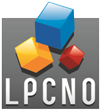Research location: Laboratory: LPCNO-INSA Toulouse, 135 avenue de Rangueil 31077 Toulouse
Themes: Topological insulators as spin-orbit torque source materials Start date: 2 October. Duration: 18 months
Contract: Supervisors: Thomas Blon (LPCNO) – Sébastien Plissard (LAAS)
thomas.blon@insa-toulouse.fr
Spin-orbit torque, which results from the charge-spin conversion in material with a large
spin-orbit, is an effective method for the electrical control of the magnetization of an adjacent
magnetic layer. One of the best charge-spin converters are expected to be topological
insulators because of their spin polarized surface states. In the framework of a collaboration
between the LPCNO and the LAAS laboratories, we investigate topological insulators as spin-
orbit torque source materials for the electrical control of perpendicularly magnetized thin films.
The LAAS partner has recently demonstrated the MBE growth of high quality BiSb(0001)
topological insulator thin films on GaAs(111) substrates [1], and the existence of topological
states using Hall measurements [2]. Spin-polarized surface surfaces states in topological
insulators are able to generate spin-orbit torque on an adjacent magnetization similarly to the
spin Hall effect and Rashba-Edelstein effect [3]. For this purpose, we demonstrated in LPCNO
the sputtering growth of ultrahin magnetic thin films with perpendicular magnetic anisotropy on
BiSb(0001).
The main objective of the 18-months post-doc will be to perform the magnetotransport
measurements on Hall cross-designed samples of topological insulator/ferromagnet
heterostructures to demonstrate efficient magnetization manipulation thanks to charge current
injection in BiSb. The work plan concerns (i) the sputtering growth of ultrathin magnetic films
on BiSb fabricated by the LAAS partner, (ii) the design of samples into Hall bars thanks to
optical and electronic lithography, and (iii) the magnetotransport measurement of the
topological insulator / ferromagnet heterostructures at low and room temperatures. This works
will be then extended to the topological insulator BiSbTeSe which presents the advantage of
a larger bulk band gap than BiSb that would reduce bulk intrinsic conduction.
This work will be conducted within the frame of a LabeX NanoX research program
(LPCNO/CEMES/LAAS). The post-doc will interact with the different academic partners of the
project, participate in the design and the characterization of the heterostructures and
communicate on the results.
Methods & Techniques
– Magnetism of thin films (required)
– Experience in magnetotransport measurement (desired)
– Experience in optical and electronic lithography (desired)
– Thin film growth, sputtering (optional)
– Programming skills in Labview, LabwindowsCVI, Matlab, etc (optional)
– Excellent organizational and scientific writing skills in English (required)
– Good communication skills (desired)
[1] D. Sadek, D.S. Dhungana, R. Coratger, C. Durand, A. Proietti, Q. Gravelier, B. Reig, E. Daran, P-F.
Fazzini, F. Cristiano, A. Arnoult, S.R. Plissard, ACS Appl. Mater. Interfaces 13 36492 (2021)
[2] D. Sadek, R. Daubriac, C. Durand, R. Monflier, Q. Gravelier, A. Proietti, F.Cristiano, A. Arnoult,
S.R. Plissard, Cryst. Growth Des. 22 5081 (2022)
[3] Q. Shao, et al., IEEE Trans. Mag. 57 800439 (2021)
